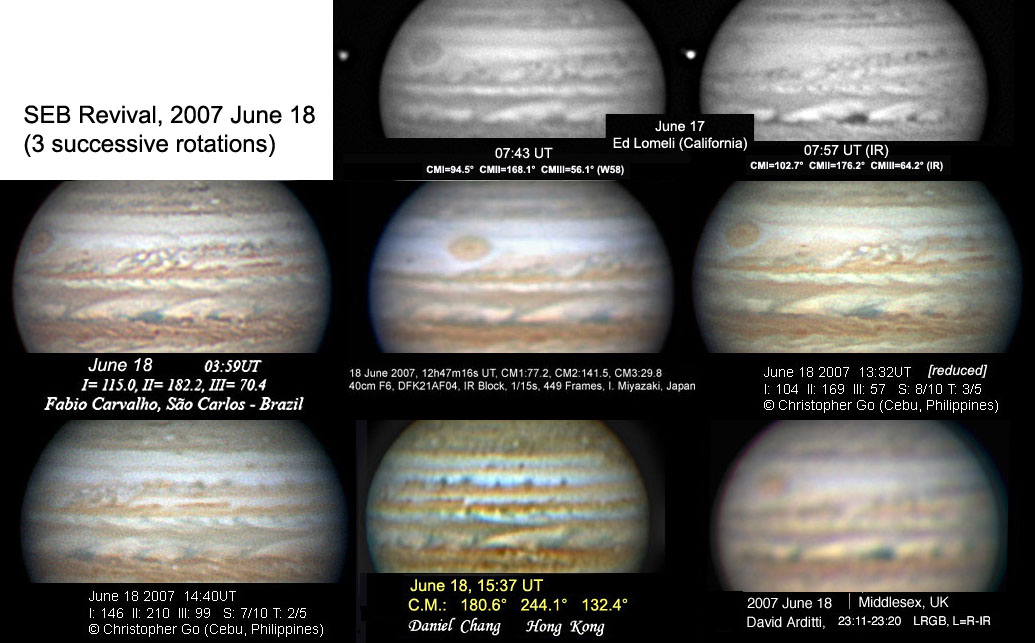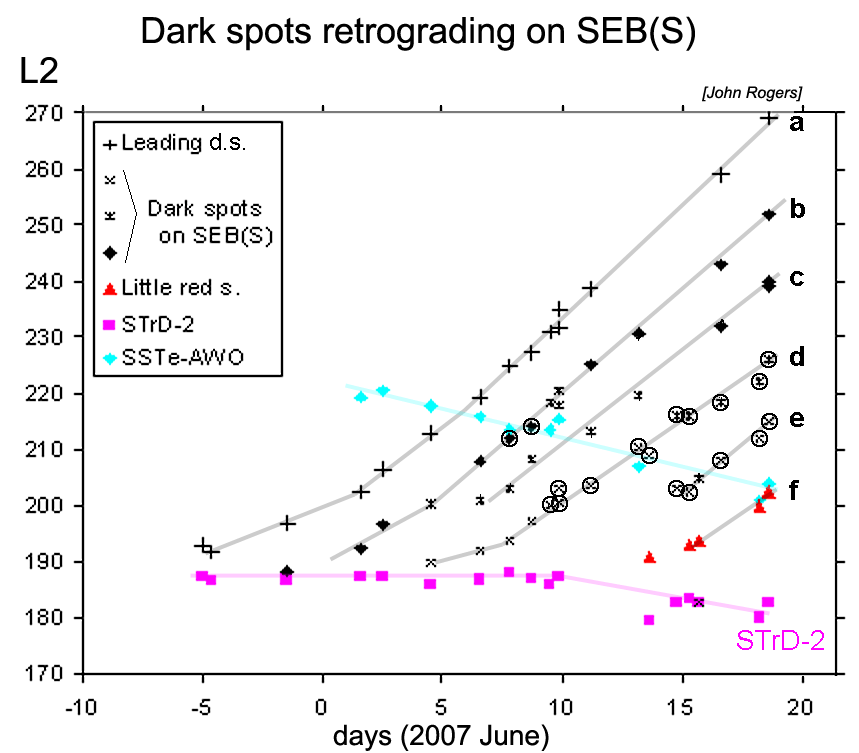
[10]
SEB
revival outbreak
(report, 2007
June 20th)
Here is a chart* showing
the motion of the dark spots on SEB(S) – the southern branch of the SEB
Revival.
The retrograding motion
is very clear, and typical for a SEB Revival. The speeds in L2 are: (a)
+120; (b,c) +110; (d,e) +84 (degrees per 30 days). These speeds for (a,b,c)
are typical of the SEBs jet, and we reported speeds in the same range in 2000/01
and 2001/02.
The spots retrograded
more slowly when they were close to the source (~ +55 to +80 deg/month); some
were also notably large and southerly. Both of these properties might have
been due to the adjacent STrD-2, but they were not well correlated, so they may
have been simply the properties of recently-created spots.
STrD-1 is at L2 = 325,
slowly prograding (L3 = 213). The leading dark spot (a) is on course to
encounter it on July 1. If STrD-1 still exists with a strong enough
circulating current, spot (a) will flip round and might travel back in the
opposite direction, in the STBn jet (or it might be torn apart). If STrD-1
is not strong enough, spot (a) will carry on retrograding, though probably with
reduced speed. Therefore, it is important to get images of STrD-1 from
July 1 onwards as frequently as possible – preferably on every rotation during
the first week in July.
Also attached is a set
of images of the SEB Revival outbreak on June 18, when it was well imaged on 3
successive rotations.


*Notes on the chart:
These longitude
measurements were made manually by JHR, from images by Carvalho, Chang,
Fattinanzi, Ghomizadeh, Go, Haese, Ikemura, Fukui, Jakiel, Lomeli, Medugno,
Miyazaki, Olivetti, Parker, & Akutsu.
Some of the scatter may
be due to inaccuracies in timing of a few images.
Dark spots on SEB(S) are
labelled (a) to (f): (a) Leading dark spot, (b-e) other dark spots, (f) little
red spot. The different types of crosses do not mean anything, but
particularly large, southerly spots are circled.
A S.S.Temperate white
oval was measured as a reference point.
_________________________________
John Rogers,
Jupiter Section Director,
British Astronomical Association.